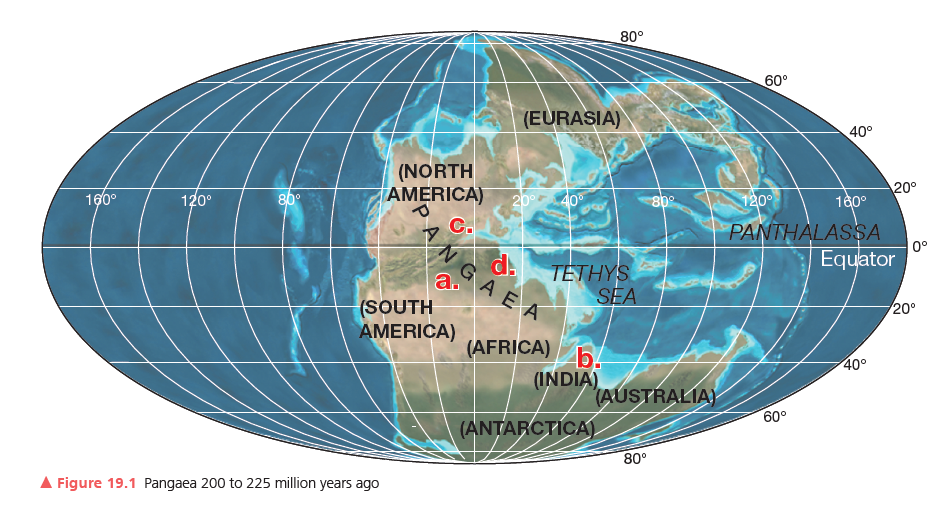For b–d below, write the letter on Figure 19.1 at the appropriate location. The first location (a), has been marked as an example for you. You will need to use Figure 19.1 and the maps of world climates and biomes (found inside the back cover and outside the back cover of this manual) to find and mark:
a) a location that was a desert (under the subtropical high) but is now a rain forest (tropical). Done for you.
b) a location that would have been glaciated (Arctic or Antarctic) but is now tropical
c) a location that was tropical but is now in the midlatitudes
d) a location that was a rain forest (tropical) but is now a desert (under the subtropical high)

You might also like to view...
Which European was responsible for the accumulation of detailed charts which led to increased commerce to include the west coast of Africa?
A) Christopher Columbus B) Prince Henry C) Charles Wilkes D) Captain James Cook
Accurate measurement of precipitation is limited by the effects of the wind
Indicate whether the statement is true or false
How are tree rings used as proxy data to provide an indirect record of past climate conditions?
a. ?Tree rings are thicker and the wood is denser when growing conditions are better. b. ?Tree rings are thicker and the wood is lighter when growing conditions are better. c. ?Tree rings are thinner and the wood is denser when growing conditions are better. d. ?Tree rings are thinner and the wood is lighter when growing conditions are better. e. ?Because of variable moisture levels, tree rings cannot be used as proxy data.
The force of ________, in conjunction with the wind, is the cause of most waves
A) gravity B) pressure C) temperature D) Coriolis effect E) friction